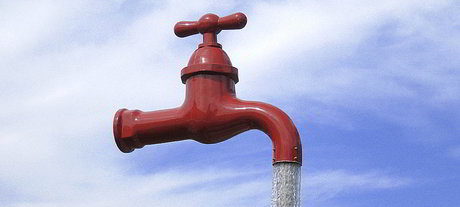Can analytics unlock Australia's sustainable future?

Australia has the opportunity to build a smart network to safeguard the country’s most precious resource — water.
Ageing infrastructure and Australia’s growing population are causing a restriction of resources, which is affecting the operation and performance of water utilities.
The force of digital disruption across the technology sector is also increasing the pressure on utilities to perform at a higher level and utilise data to benefit the consumer. Add that to the complex Australian climate, with natural disasters like bushfire and drought, and it’s clear that water is a more critical resource than ever.
To combat these issues, utility companies can turn to the power of data, technology and location-based analytics to better understand and manage water infrastructure and networks.
Water leakage in Australia is up to an average rate of 18% and, according to National ICT Australia (NICTA), Australian water utilities spend $1.4 billion per year on reactive repairs and maintenance, including the consequence cost of social and economic impact.
As utilities implement new technology, such as smart communication systems and sensors to better their operations, they are receiving endless amounts of data from their infrastructure and a variety of external sources. This is, in turn, making a speedier fix possible for consumers.
Utilities can use different types of smart sensors to gather data and apply advanced analytics techniques, such as sensors and pattern detection, to potentially provide real-time information on the location of a leak in the network.
The benefits of data collection
As always, proactive measures will win out over reactive actions in the long term. Saving water can also save energy because utilities won’t have to pay for electricity to pump, clean and distribute non-revenue water. The most expensive cost of running a water utility is electric power.
Potential cost savings for the industry are enormous, with the best opportunities to improve utility performance found to be through leakage and pressure management, streamlined water quality monitoring and maintenance. Solutions for these issues could lead to savings for the water industry of up to $700 million per year long term; a worthwhile infrastructure investment.
There are data-driven techniques designed to improve the prediction of pipe failures; this data will lead to intelligent predictions to help to reduce maintenance costs, prioritise capital spend and minimise disruption to water supplies and the community.
How can data help?
Data analytics can help utilities receive the maximum value out of the information collected: from leaks to non-revenue water to water distribution.
By considering the sources of data, consumer consumption behaviour, climate data (ie, drought flow) and population data as reference points, it’s possible to leverage an overview of the existing system and prioritise the issues that can be solved. For example, the combination of meter data and a customer-facing portal can help utilities empower their customers to proactively monitor for leaks and monitor water usage.
Data analytics can also facilitate conservation by reconciling non-revenue water loss, enabling customer segmentation and additionally providing environmental and societal benefits. Utilities can foster these benefits through closely monitoring customer usage and educating customers on their consumption by providing them with regular alerts on their personal water usage.
From analysis to actionable insights
It is important for utilities to recognise that water is not their only valuable resource; they can turn data into actionable insights. The introduction of real-time meter reading capability means that utilities can gather and analyse meter data using planned checks and reporting systems, which is an essential factor for a long-term solution.
By encouraging customers to self-initiate conservation through customer portal applications, it will be easier to generate long-term conservation gains, as improved communication to customers about their consumption is more likely to encourage self-initiated conservation to take place.
What does this mean for Australia?
The biggest issue for water utilities in Australia is water leakage. The best communications systems and data analytics tools will help to provide the right solutions at the right time, and adapt as each utility embarks on its journey of change.
Through the use of smart water networks and data analytics, customers are able to retrieve on-demand data and convert it into insights that can be immediately acted upon to improve efficiency and revenue. With these considerations in mind, water utilities are on their way to a better, sustainable future.
Smart water networks are key for the future of utilities in Australia. There is complex disruption happening in the industry, but this brings great opportunity to build a smart network to safeguard the country’s most important resource — water.
Tackling AI complexity and trust in the Australian public sector
In a sector where much time and energy is spent on repetitive tasks, AI's ability to process...
AI agents: enhancing public sector efficiency and citizen engagement
AI agents have the potential to transform public sector efficiency and elevate citizen engagement...
Australia's 'digital divide' is growing
As the cost-of-living crisis intensifies, research reveals a growing digital divide in Australia,...



